Many purchase drivers push customers into buying a product. For example, there are prices, social influences, fulfillment, and more.
One of the most important factors is product labeling and packaging. Indeed, the psychology of ecommerce packaging is critical for your business.
Are you a business owner or a budding entrepreneur? Then, learn the effects before you launch your products.
Find out how you can hack your ecommerce sales below!
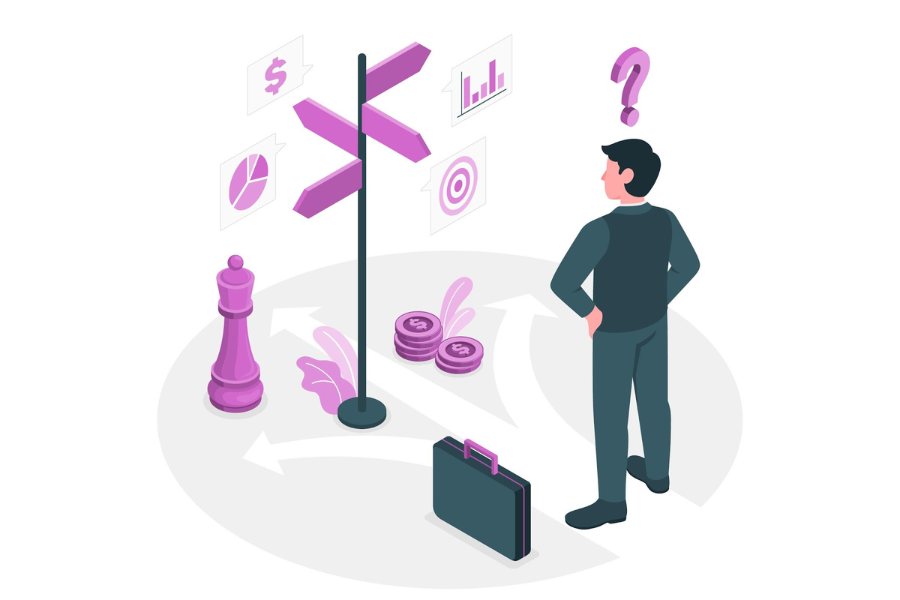
Source: Freepik.com
Introduction to Product Labeling and Packaging: Importance and Impact
In the world of retail, packaging and labeling are a silent but powerful element of branding.
Now, what is product labeling? It is the act of displaying and writing the information about a product on its pack.
Thus, product labels show relevant information or important details that the customers should know:
- Your branding elements
- Expiry dates
- Choking hazard warnings
- Other safety warnings
- Ingredients
- Nutrition facts (for food items)
These are essential when introducing your product to the market. They are legal requirements to gain product approval. In addition, they identify goods properly. The impact of misleading product labels in ecommerce is severe.
But more than that, it’s the first influence or point of contact between the item and its potential buyers. They’re also a necessary tool to help you connect with your customers.
Aside from the label, the product’s packaging is also important. It aims to captivate the eyes of the final consumer and persuade them to make a purchase.
Most Filipinos look at the product package and then proceed to check the label. That is why you should design your goods to be captivating even from the product stand.
This is a strategic business asset. It lets you influence customer loyalty, customer acquisition, and retention.
The entire point of marketing is to convince consumers to get your goods. Thus, invest in great designs. This way, your brand stands out and creates a memorable brand experience.
Labels in the Philippines
Here are some of the product labeling requirements in the Philippines. According to the Philippine National Trade Repository (PNTR), this should include:
- Labels written in English or Filipino, with 2.55 mm text if pre-printed, and 5mm text if hand-painted;
- The registered business name of the exporter or brand name of the product;
- Country of origin;
- The address of the owner/exporter;
- Lot identification;
- List of ingredients and/or product description;
- Net quantity of contents;
- Expiration date;
- Manufacturing date;
- Handling or storage instructions.
If any of the required details are missing, the authorities may pull the product from the market.
The Power of Packaging: First Impressions in Ecommerce
When you’re selling online, all the customer sees are your displays. Moreover, in such a crowded marketplace, everybody else is doing the same thing.
That’s why packaging is one of the most important things you can do for your online store. A good package helps you stand out from the crowd and build a good brand.
But what exactly does it do? This section will go into further detail.
Unboxing Experience: Building Brand Loyalty
This term refers to how customers feel when they open your product’s pack.
It’s the combination of anticipation, surprise, and satisfaction. This experience goes beyond the product itself. It includes factors like:
- Presentation
- Packaging quality
- Personalization details
Why is this important? This experience is your chance to create a positive first impression of your brand.
Unlike retail, you don’t have the advantage of a physical store. Therefore, the unboxing is your customer’s first physical touchpoint with your brand.
A great experience will delight your customers. The detail and attention poured into it will make them feel special. All these create positive experiences.
What happens when customers have a good unboxing experience? They are more likely to leave positive reviews. They will even recommend it to their connections.
Thus, the outer look of your goods has such a crucial role to play here.
Good packaging enhances the unboxing experience. The visuals and tactile characteristics of your product make unboxing it special. Of course, special is what you’re aiming for.
Standing Out on a Crowded Virtual Shelf
In the saturated online world, your presentation is more critical than ever.
We Filipinos scroll through endless products. To grab their attention, your product has to look like what your audience wants to see. Visual appeal is part of it – but only a part.
Good design is distinct, clear, and instantly recognizable. It doesn’t just grab everyone’s attention; it calls those who resonate with your identity. In other words, it wins over the right people.
Specifically, here’s what good packaging and labels do:
- Convey brand identity. Your packaging reflects your brand’s personality and values. This is a touchpoint that helps customers connect with your brand on a deeper level.
- Communicate product value. Quality wrappings signal that your product is premium and worth the price. They give customers confidence in their purchase.
- Build trust. Professional design assures customers that you’re protecting their purchase. It also shows that you handle your products with care. When customers feel that you care for them, they develop stronger trust.
- Physical presence when creating an online store.
Thus, visuals can be the deciding factor between a sale and a missed opportunity.
Best Practices in Ecommerce Product Packaging
Presentation is not just aesthetics. It’s not just a good-to-have. Rather, it’s a crucial lever that moves your customer’s first impression.
Thus, this section will discuss how to improve product labeling for ecommerce. Learn the best practices for product packaging design for ecommerce below.
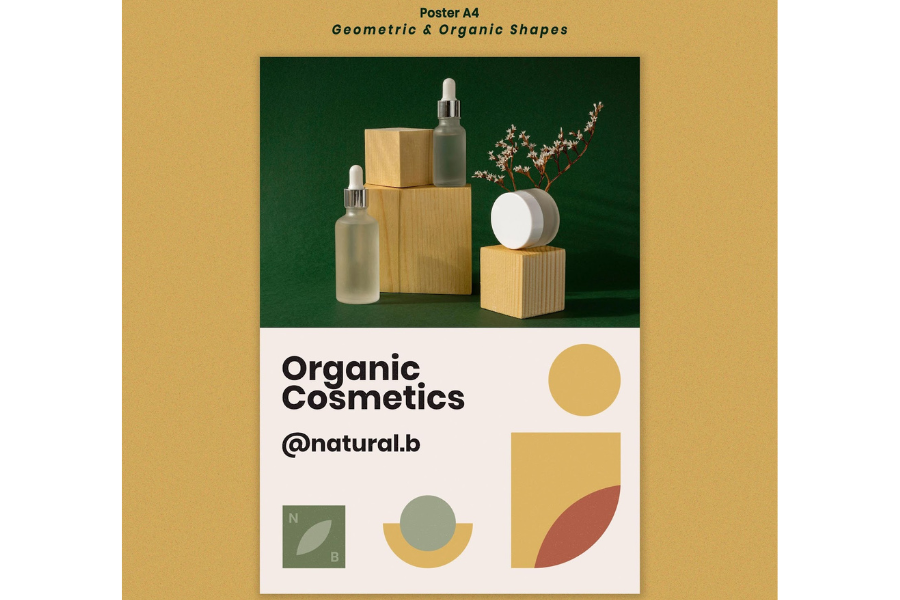
Source: Freepik.com
The Role of Visual Appeal in Product Packaging
Visual appeal is crucial. Creating a package that matches your brand increases consumer engagement and brand awareness.
You can experiment with captivating or unique designs. For example, try using bold colors and high-quality graphics. Visual appeal gets the customer’s attention. It makes them think of the key characteristics of each product. As a result, your product can create a lasting impression.
Innovative packaging designs stay in consumers’ minds, as do colorful or minimalist designs.
The best strategy is to create a design that matches your brand. Your audience’s opinion is also important. Design something likely to gain traction with your target audience. For this, A/B testing product packaging for ecommerce success is invaluable.
Creating a Memorable Brand Identity Through Packaging
You can also spread brand awareness through your designs. After all, good looks create an impression on your market.
Brand expression and storytelling don’t just happen in your online marketing campaign. Your physical product can also communicate them well. In this case, the box or wrapping of your goods serves as an unsung hero of the brand’s essence and values.
In addition, you should also be keen about your secondary packaging. It’s what the customer sees in the product aisles or supermarkets. The exterior of the product attracts attention, so you can start with that for your brand image.
Your primary packaging, on the other hand, is the one that has direct contact with your product. So, you need to make sure that it keeps your goods safe.
This is especially true if your product is a food item. Ensure that the primary packaging does not cause contamination and will preserve the item well.
Even products that usually have similar packaging can differ in design. Factors like color, branding name, and labeling differentiate them.
Spreading brand awareness through your product packaging should consist of these elements:
- Logos
- Brand colors
- Other visual elements
You can also aim for sleek minimalism to stand out.
Just because a product comes in a bright color, doesn’t mean it will get the buyer’s attention. Some people prefer minimalist designs. Thus, choose a color scheme based on your brand identity and audience preferences.
Brands can leverage packs as a platform for distinction through many means. You can try interactive features, personalized experiences, or sustainable materials.
The Influence of Packaging on Perceived Product Quality
Packaging has a huge influence on consumers’ perceptions. Some Filipinos judge a product’s quality based on its design. They look at the style, size, and the efforts that went into making it.
Say you are selling products of small to medium size. You must ensure that the packaging is not complicated and inconsistent. On the other hand, you need to pack big products properly or risk them getting damaged in transit.
You can achieve high-quality packaging through:
- Sturdy materials
- Attention to detail
- Meticulous or aesthetic design, etc.
This communicates to your consumers that your product is trustworthy and worth buying.
Moreover, packaging size contributes to consumers’ assessment of the product. Larger packs often imply a higher value proposition.
In contrast, flimsy and easy-to-break packaging raises doubts about your brand’s integrity. Bad designs make your audience reluctant to buy your items.
Communicating Product Information Through Labels and Packaging
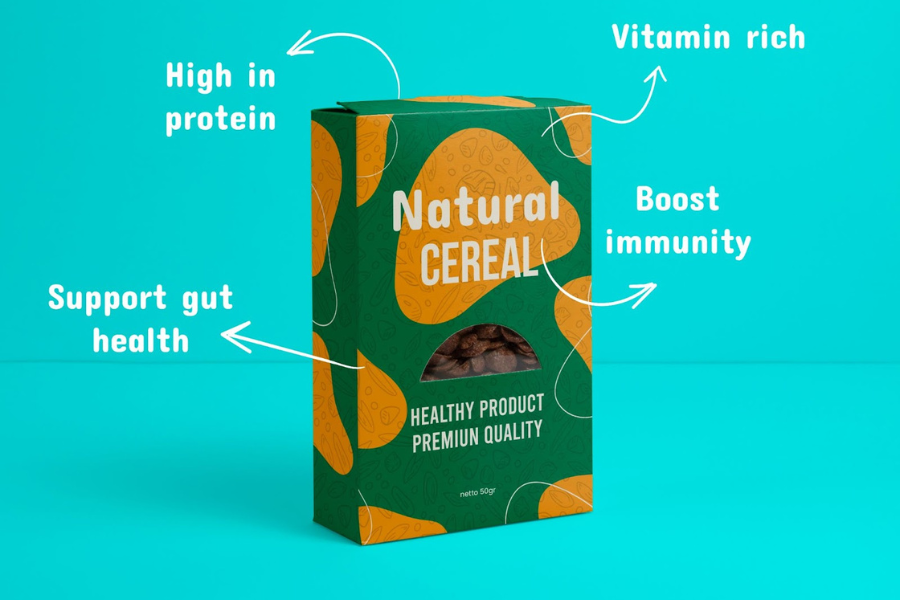
Source: Freepik.com
Product information tells users about safety precautions, instructions for use, etc.
Informative labels can include:
- Storage guidelines
- Details about potential hazards
- Usage instructions and more
Ecommerce product information clarity is critical. The label must include concise and clear instructions. Also, it should be easy to understand. Make sure to use simple words that everybody knows to ensure customer safety.
Another type of label is the descriptive label. It provides customers with key information like ingredients, intended usage, and dimensions. These details help people assess whether the product is what they need. They show nutritional facts, technical specifications, and so forth.
Utilizing Color Psychology in Packaging Design
Your brand colors are very important in design.
They can influence customers’ perceptions. For instance, they may trigger emotions that inspire consumers to make a purchase.
You can use the psychological impact of colors to cause feelings and associations. These will resonate with your target customer.
Studies have been done on warm vs. cool colors in product design. Researchers found that customers respond positively to packaging with cool-toned colors. People tend to associate them with calm and relaxation. At the same time, warm colors inspire a feeling of arousal and a sense of attention.
A great example of these claims is throat lozenges with blue or green designs. These colors represent calmness and freshness. Thus, they’re strongly associated with the alleviation of throat pain.
Furthermore, color shapes brand identification. Big companies use trademark colors all the time. This establishes visual consistency and strengthens the brand.
For example, Coca-Cola is known for its red and white branding colors. They have never changed, except for the addition of black. Even today, they have kept the same old color scheme that the majority of people know.
Packaging and Consumer Perception of Value
Filipinos value innovative packaging. They are curious about anything that is out of the ordinary. Therefore, they tend to buy those products.
For example, look at local Filipino tea brand called Healthy You. They sold their powdered chamomile tea in a resealable pouch.
This allows customers to pour as much tea as they want in a serving and have only one bag for storage. It is unlike other teas, where they divide servings into individually packed tea bags.
Customers (especially Filipinos) love convenience and efficiency. Therefore, there is a high chance that they would prefer to buy the tea in a resealable pouch. This shapes customers’ perceptions of the product’s value proposition.
Companies that put effort into innovative packages charge more for their goods.
For example, products that come in boxes with magnetic seals are less common. Thus, they feel more luxurious to unpack. They usually cost more than similar products in more traditional packaging.
Innovative solutions can also target the customer’s point of interest.
Studies also show that some people buy products because the packaging is great. It is a win-win situation for both the company and the customer.
The Role of Packaging in Differentiating Products in a Competitive Market
When done right, packaging sells. It entices buyers via its visual appearance and informative and catchy content.
A great example of the sales conversion power of packaging is the Flower Knows makeup brand. It’s gaining traction in the Philippines because of its magical and fairytale-like designs.
Most makeup brands are simple and sleek. However, this specific brand brought something different. It worked because it looked fresh and new, different from the majority of the makeup brands out there.
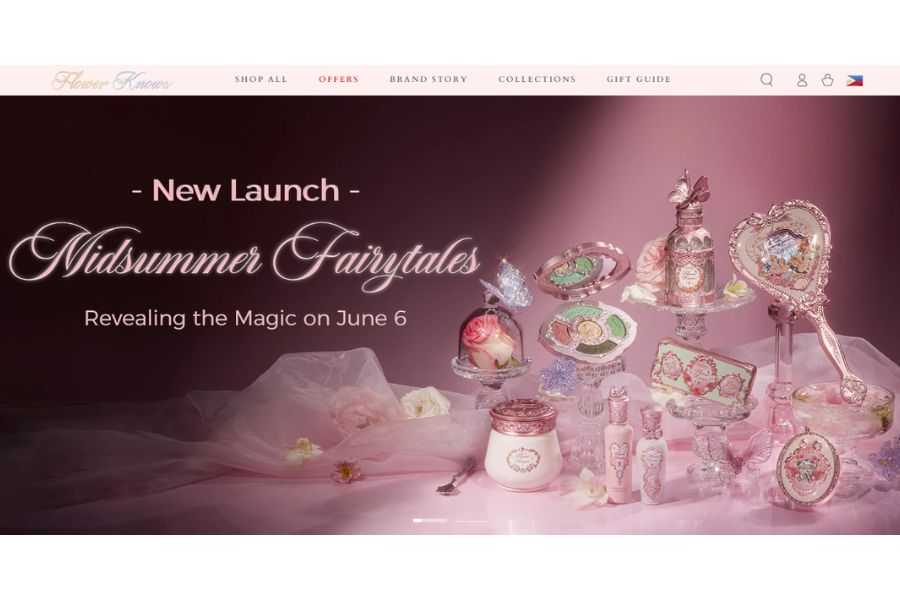
Source: flowerknows.co
Good packaging differentiates your products from others. It also captures the customer’s attention more.
Thus, planning your design is critical. It’s just as important as crafting your marketing plan or business strategy. Distinctive branding impresses customers and creates a lasting impression.
Packaging and Brand Consistency Across Product Lines

Source: Freepik.com
Packaging can trigger a sense of recollection and reliability. This helps your brand inspire trust and loyalty over time. This is especially helpful when consumers encounter products by the same brand.
Consistency involves making sure that you have uniformity in factors such as:
- Colors
- Logos
- Other visual elements
- Materials used
Two examples of consistency in packaging are Apple and Coca-Cola.
Apple’s easily recognizable minimal aesthetic packaging is core to its brand identity.
Meanwhile, Coca-Cola may come in several flavors. However, its logo and distinct colors still ensure uniformity. It only makes minor deviations from them. For example, replacing the red with a muted dark pink for Cherry Coke.
Consistency in your packaging reinforces brand identity and brand awareness over time.
Thus, your customers remember your product better. If you keep experimenting with new designs, users may think it’s a brand-new item each time they see it. As a result, they might fail to develop any sort of loyalty to your company.
Packaging and Consumer Convenience and Functionality
One of the key aspects is ergonomic design.
It means the item is safe, comfortable, and efficient to use. We use these designs to guarantee a user-friendly experience for the customers. Ergonomics have the following elements:
- Size
- Shape
- Grip
Look at Century Pacific Food’s Argentina Corned Beef, a classic Filipino family dish. In the early 2000s, you can only open corned beef with a can opener or a kitchen knife.
However, around 2015, the company introduced an “easy-open” can version of the product. This makes the packaging safe and efficient for the customers. Because of this, Argentina is still a household name to this day.
Packaging can do more than aesthetics and branding. They can actively improve your customer’s lives with their design.
Sustainable Packaging and Its Influence on Consumer Choices
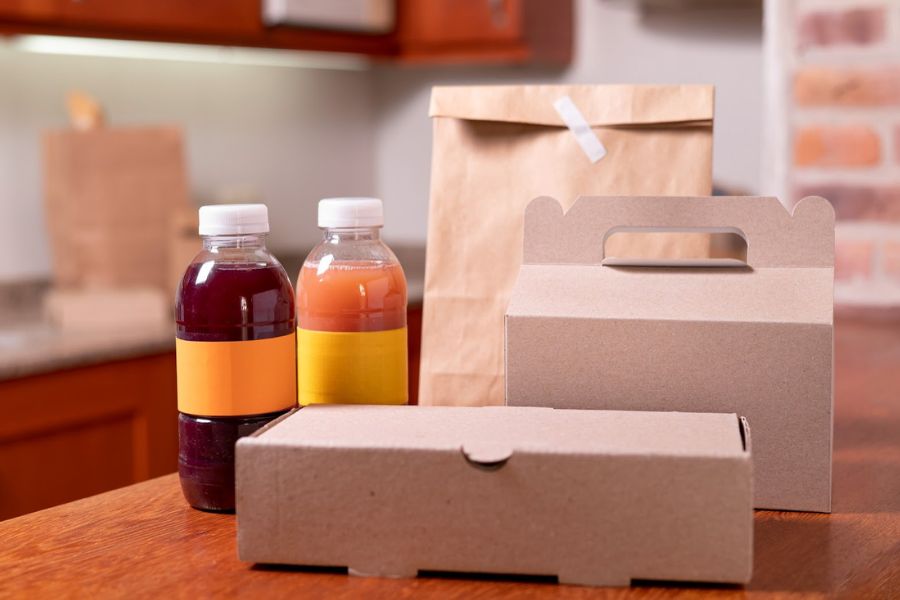
Source: Freepik.com
Sustainable packaging can work as a differentiator for brands in a competitive marketplace.
There is a growing number of environmentally concerned customers. Leverage those numbers to show that your brand supports eco-friendly policies. This approach can create a good impression on that specific target audience.
Initiatives for sustainable packaging solutions impact your company’s reputation. They can draw in more clients and strengthen brand loyalty among existing customers.
Communication and transparency about your sustainable wraps influence your consumers’ decisions.
Some consumers’ purchasing drives are heavily influenced by transparency. Brands that prioritize the environment leverage this to influence their target market.
If you want greener packs, try using recycled materials. Also, cut down waste by going minimal, etc.
The Impact of Packaging on Impulse Buying Decisions
Impulse buying refers to purchases that the user did not intend to make. These could be items that the customer doesn’t need at all. It could also be alternatives to what was initially on their shopping list.
If you make your products look appealing on the outside, you tip the scales in your favor. It can inspire an impulse buy.
In general, design is very important in grabbing the customers’ attention.
Products stand out on store shelves with unique features or a distinctive exterior. An eye-catching package design grabs the consumer’s interest. It instantly encourages them to try out or examine the product in detail.
Additionally, your packs carry signals and messages. These should be persuasive and appeal to the interests and emotions of consumers. The subtle application of the following encourages impulsive purchases even more:
- Persuasive messages
- Appealing colors
- Limited-edition designs
Positive designs inspiring joy, enthusiasm, or nostalgia set off spontaneous reactions in customers. This, in turn, can persuade them to make decisions based more on feelings than logic.
Case Studies of Successful Product Labeling and Packaging Strategies
Many Filipino brands have successfully used product labeling and packaging to drive sales. Here are some of them.
Nestle Philippines
Nestle released a chocolate energy booster drink called “Milo.” Filipinos all know and love Milo because of its small packs and cool pictograms.
The product frequently runs a limited edition series with pictures of Filipino athletes. Big packs also have a minimalist green color scheme with images of kids and adults drinking it. It has complete instructions on the back on how to prepare it, hot or cold.
Century Pacific Food
“Easy-open canned tuna” was the tagline of the product and can be visibly seen on the packaging.
Century Pacific Food pioneered the easy-open can in the Philippines. This allows Filipinos to easily bring tuna cans as a packed lunch or when camping and traveling. The ergonomic design was perfect and became a success.
So, before you open a new online store, you should make sure that you plan your packaging and labeling well. This helps you capture the hearts and eyes of your customers.
FAQs
What Are the Most Commonly Used Materials for Sustainable Packaging?
The most commonly used materials are:
- Recycled paper
- Biodegradable plastics
- Cardboard boxes
- Bioplastics
- Glass, and
- Recycled aluminum
These materials are very available in the Philippines. Thus, they’re often used for sustainable packaging and labelling in the country.
What Brands in the Philippines Use Sustainable Packaging?
Plenty of brands in the country use sustainable ecommerce packaging solutions. Some examples are The Bamboo Company, Bayani Brew, Human Nature, and more.
How can I use packaging to improve my conversion rate in ecommerce?
Good packaging makes your product stand out and look more valuable. Thus, use professional, eye-catching designs that reflect your brand. Show it clearly in your product photos. Also, include customer reviews on product packaging. This improves customer confidence and makes them more likely to convert.